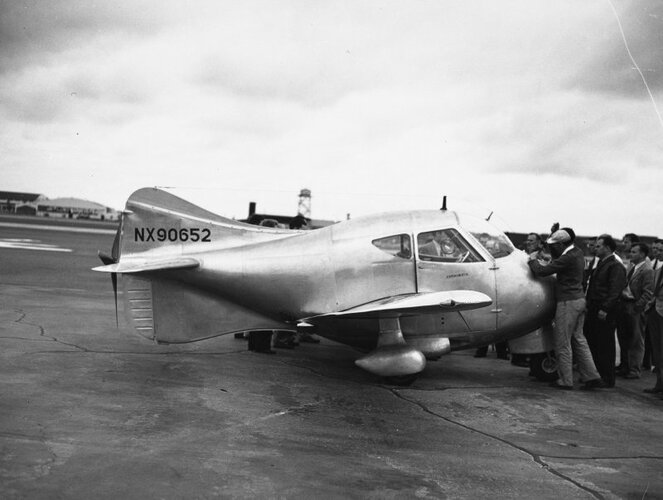Stout XC-107 is one of the very few illusive USAAF/USAF “C” aircrafts before the re-designation in 1962. I have been very much interested in finding reliable information regarding XC-107 and recently I recalled that the excellent Andrea Parsch’s site on designation has official document with comprehensive list of aircraft description sometimes with 3 view drawings, issued at the end and just after the WW II.
The original document titled “MODEL DESIGNATION ARMY AIRCRAFT” (11th edition published by Commanding General Army Air Forces, January 1945) and (12th edition June 1946) can be seen from this address;
http://www.designation-systems.net/usmilav/original-docs/index.html
The followings are taken from those documents:
Description regarding Stout XC-107;
(from page 59 of the 1945 edition)
MODEL XC-107
MFR. STOUT
SPEC. NO. 103
QUT. 1
POWER PLANT MFR. Lycoming
MODEL O-290
CHARACTERISTICS Two-place, mid-wing, pusher type monoplane. The pilot and passenger are seated in the nose of a nacelle, the engine being installed in the rear to drive a pusher propeller. The wing is attached to the nacelle aft of the cabin and the tail surfaces are supported by two booms which are attached to the wing. A 25-gal. fuel tank is provided. The airplane is constructed largely of low alloy steels and plastic materials to determine the useful load – 623lbs. Radio receiver R.C.A. AVT-15, transmitter R.C.A. AVR-20-1. (Stout Model Skycar IIIA).
(from page 37 of the 1946 edition)
AIRCRAFT MODEL & MFQR. XC-107 “SKY CAR” STOUT
QUANTITY 1
SPEC. NUMBER 103
DESCRIPTION Experimental military model of Stout “Skycar III”, two-place, pusher type, twin booms, powered with Lycoming O-290 engine.
For reference, description regarding Stout XC-65 are as follows:
(from page 57 of the 1945 edition)
MODEL XC-65
MFR. Stout
SPEC. NO. Rep.15
CONT. NO. PO-5530
QUT. 1
POWER PLANT MFR. Franklin
MODEL (blank)
CHARACTERISTICS Pusher type, high-wing, cantilever monoplane made of stainless steel sheet, spot-welded to the frames, employing a four wheel, fixed cantilever landing gear. Tail is carried by twin booms on either side of the propeller. Accommodate crew of two.
(from page 29 of the 1946 edition)
AIRCRAFT MODEL & MFQR. XC-65 STOUT
CONTRACT NUMBER PO-5530
QUANTITY 1
SPEC. NUMBER 15
DESCRIPTION High wing, pusher-type plane, powered with Franklin engine and seats 2 persons side by side. Manufacturer claims spin-proof characteristics and practically automatic control. Has four wheels of which front pair are steerable. Twin-boom type of all metal construction. Crashed and burned (Project dropped).
The 1946 edition has two view drawings of XC-65 (see attachment 1) but none of XC-107. There is no drawings at all in the 1945 edition.
Also there is a famous picture of XC-65.(see attachment 2 from AEROFILE)
Findings from those documents;
1, The XC-107 is a two-place, mid-wing, pusher type monoplane and the tail surfaces are supported by two booms which are attached to the wing.
2. Based on the above description, the external shape of XC-107 is different from the Stout Skycar I or Skycar IV(aka Convair 103) which does not have twin booms.
3, The external shape of Stout XC-107 matches quite well with that of XC-65 (Skycar II) except that the former has “mid-wing” while the latter has “high-wing”.
4, In the popular website “AEROFILES”, there is a three view drawings of a mysterious airplane drawn in 1944, strangely named Skycar IV, uploaded by Eric Blocher, which matches the description of XC-107 up to the point of “mid-wing”. (see attachment 3 from AEROFILE)
5, Therefore I assumed that the above mentioned three view drawings might be the XC-107 itself or at least a close variation of XC-107.
I greatly appreciate any comment on the assumption.
I am very much interested to see other editions of the “MODEL DESIGNATION ARMY AIRCRAFT”. Anyone who owns those documents , please inform me.
Kenji Nozaki (eep1a)













































